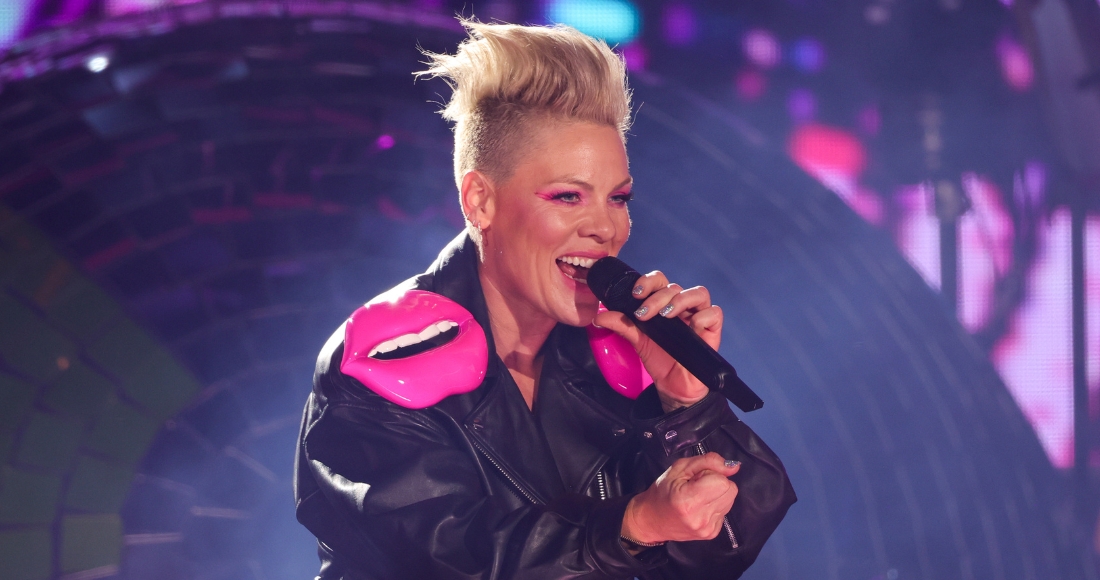Pink - A Look At Its Many Appearances
Have you ever stopped to truly think about the color pink? It's more than just a shade, isn't it? It appears in so many unexpected spots, from the quiet moments in a laboratory to the vast, open sky above us. You know, it's quite interesting how something so seemingly simple can show up in such a variety of forms, almost like a little surprise hiding in plain sight.
Sometimes, we come across pink in ways we might not initially expect, like when observing a subtle change in a chemical mix, or even when looking at a picture on a screen. It's a color that, in some respects, has a way of catching our attention, whether it's a soft, barely-there tint or something a little more striking. People often have feelings about pink, good or bad, but its presence is undeniable.
From the delicate hues found in nature's own artwork to the everyday items that bring a bit of charm into our homes, pink really does make its presence known. It pops up in the most surprising places, like in icy environments or even on our dinner plates, showing us just how much variety one color can hold, which is quite something, really.
Table of Contents
- What Makes a Faint Pink Appear?
- Is Pink Always What We Expect?
- Where Does Pink Show Up in Nature?
- How Does Pink Affect Our Surroundings?
What Makes a Faint Pink Appear?
When you're working with certain chemical mixtures, you might observe a very subtle color shift. This change, you know, can happen rather gradually. For instance, in some situations, a very light pink coloring will slowly become less noticeable, fading away over time. It's almost like watching a whisper of color disappear right before your eyes, which can be quite interesting to observe, honestly.
This fading effect means that the initial color was just a temporary sign, a fleeting moment in the chemical process. If you were to add a bit more of a particular substance, say something like sodium hydroxide, after that very light pink mark had been reached, you might see a different outcome. It could, in fact, cause a deeper, more pronounced pink color to appear. This shows how precise these kinds of chemical reactions can be, where just a little bit more of one ingredient can make a noticeable difference in the final appearance, which is pretty fascinating.
The Delicate Dance of a Pink Endpoint
There was a time, for example, when someone tried to create a particular liquid mixture. They adjusted its acidity level to a specific point, pH 12, and at that moment, the liquid took on a pink shade. It was a clear indication that things were going as planned, a visual confirmation of the chemical balance, so to speak. However, the story doesn't quite end there, as a matter of fact.
After that lovely pink appeared, another ingredient, something called EDTA, was introduced. And what happened then? The liquid, quite suddenly, changed its color again, this time turning blue. It's a bit of a mystery, you know, what might have gone wrong during a previous attempt, perhaps too much of one component was added the first time around, causing the initial experiment to behave differently. This kind of trial and error is just a part of the process when you're working with these kinds of things, and it shows how sensitive the color pink can be as an indicator.
It's like a little puzzle, trying to figure out why the pink appeared when it did, and then why it shifted to blue. The exact amount of each substance really matters, and if you put in too much of something, it can throw the whole visual display off. So, seeing that pink color means you're on the right track, but then seeing it disappear or change to blue means you might need to re-evaluate your measurements. It’s a very visual way to tell if you’ve got things balanced, which is kind of neat.
Is Pink Always What We Expect?
Sometimes, pink shows up in places that might make you pause and think. For instance, there was a time when a particular image, a brain icon, appeared in a pink color on a screen. If you were around back then, you might remember it, or perhaps you'd be curious to see what that pink brain picture was all about. It just goes to show how colors, like pink, can be used in unexpected ways to represent ideas or objects in the digital world, which is quite interesting, really.
It's possible that some of us, like myself, might feel a bit out of touch with the current ways people use these kinds of visual symbols, especially with colors like pink. The trends in how we use little pictures and icons on screens change pretty quickly, you know. What seems common today might have been unusual just a little while ago. So, seeing a pink brain icon, for some, might have felt a bit new or different from what they were used to, highlighting how our perception of colors in digital spaces can evolve, as a matter of fact.
Unexpected Pink - From Screens to Skies
Beyond the digital world, pink also makes a grand appearance in the natural world, particularly when we look up at the sky. Think about those moments when the sun is setting or rising. You might see the sky painted with various shades, sometimes starting with a gentle pink, then moving into oranges, yellows, and even browns. It’s a truly breathtaking display that happens every day, and that pink can be the first hint of the coming beauty, you know.
These sky colors, including the pinks, are just a matter of how light interacts with the air, creating a truly spectacular show. The sun itself, when it manages to peek through breaks in the clouds, might appear in colors like blue or purple, which is quite a contrast to the warm pinks. It's fascinating how the same sun can create such different visual experiences depending on its position and the atmospheric conditions, and that pink in the sky is just one part of that amazing daily occurrence, basically.
The way the sun disc shows itself, appearing and then disappearing behind cloud formations, adds another layer to the sky's appearance. It’s like a little peek-a-boo game, where the sun plays hide and seek. And during these times, the colors, including those lovely pinks, can shift and change, giving us a unique view each time. So, the pink you see in the sky is never quite the same, which is pretty cool, if you ask me.
Where Does Pink Show Up in Nature?
Pink, it turns out, can be found in some truly surprising corners of the natural world. For instance, there are these amazing creatures called ice worms. They have a very specific diet, which includes tiny airborne pollen grains and fern spores. But what’s really interesting is that they also eat a type of red algae that lives right there in the snow. And this algae, you know, sometimes gives the snow a distinct pink color. It’s a pretty unusual sight, to be honest, seeing pink snow.
These ice worms are quite particular about their environment, too. They simply cannot survive if the temperature drops much below freezing, which is a very narrow range for something that lives in snow. So, the presence of that pink-colored algae is not just a visual curiosity; it's also a food source for these unique little beings. It's a rather delicate balance in their cold habitat, where the pink algae plays a very important role, apparently.
The Surprising Pink of Algae and Ice Worms
It's quite a thought, isn't it, that something as seemingly barren as snow can harbor life, and that life can even produce color, like pink? The red algae responsible for this pink hue thrive in those cold conditions, creating a vibrant splash of color in an otherwise white landscape. It's a testament to nature's adaptability, showing us that beauty and life can be found even in the most extreme places, and that pink is just one example of that, in a way.
And then, to bring it back to a more everyday experience, pink can even show up on our dinner plates. Imagine sitting down to eat, and there, right in front of you, are three servings of something that is distinctly pink. It could be a dessert, or perhaps a savory dish, but the color is undeniable. It’s a simple, common way we encounter pink, reminding us that this color is a part of our daily lives, from the vast outdoors to the food we eat, which is pretty neat, you know.
The appearance of pink in our food, whether it’s a natural part of the ingredient or something added for visual appeal, definitely contributes to the whole eating experience. It’s not just about the taste, but also about what we see. So, when you’re presented with those three helpings of pink, it just adds to the overall enjoyment of the meal, making it a bit more cheerful, as a matter of fact.
How Does Pink Affect Our Surroundings?
Sometimes, the choice of a color, like pink, is purely about how it looks and the feeling it creates. It’s more a matter of what we find pleasing to the eye, what gives us a certain kind of feeling when we see it. For example, some people have these candle holders made from pink Himalayan salt. And when a candle is lit inside them, they give off a really gentle, pleasant glow that can make a room feel very cozy and inviting, which is a good idea, honestly.
The soft light that comes from these pink salt holders is just one way the color pink can contribute to the overall feeling of a space. It’s not about bright, overwhelming light, but rather a subtle warmth that spreads through the area. This kind of soft illumination can really change the mood of a room, making it feel more relaxed and peaceful. It’s all about creating a certain atmosphere, and that gentle pink light does a wonderful job of it, you know.
The Gentle Glow of Pink Salt
The appeal of these pink salt items is, in essence, about their beauty and the calm they bring. It’s a very simple thing, really, but the visual impact of that soft pink glow can be quite significant. It makes a space feel more lived-in and comfortable, almost like a comforting presence. So, if you're looking to add a touch of warmth and a feeling of ease to your surroundings, something that gives off a nice pink glow could be just the thing, apparently.
It just goes to show how much influence colors, even subtle ones like the glow from pink salt, can have on our everyday environments. They don't have to be loud or dramatic to make a difference. Sometimes, it’s the quiet, gentle presence of a color like pink that truly transforms a space, making it feel more welcoming and personal. It’s a testament to the power of simple aesthetics, which is pretty cool.
So, from the fleeting chemical reactions in a lab to the vast, changing canvas of the sky, and from the surprising life forms in icy landscapes to the comforting glow of a salt lamp in your home, pink shows up in so many different ways. It’s a color that can indicate a scientific process, appear in natural wonders, or simply add a touch of beauty to our daily lives. It’s truly everywhere, if you just take a moment to look, you know, and appreciate its many forms.

P!NK Concert Tickets

P Nk Summer Carnival 2024 Setlist - Corry Doralyn

Download Hot Pink Solid Color Iphone Wallpaper | Wallpapers.com